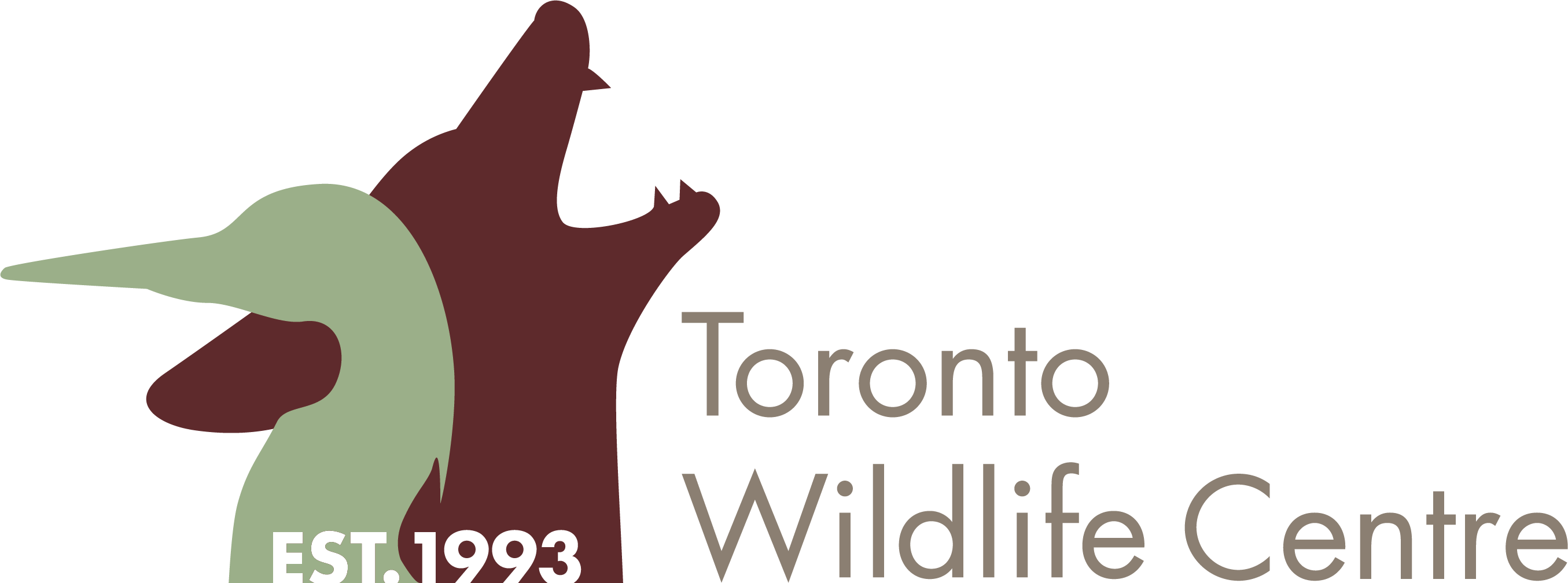You’ve found a rabbit nest in your yard, a park, a schoolyard, or anywhere else. The nest hasn’t been dug up or disturbed, and none of the babies are injured, but you’re worried because you haven’t seen the mom.
What’s normal
We’re used to seeing rabbits in storybooks and in cartoons nesting underground in holes. Eastern cottontail rabbits (the most common species in southern Ontario) don’t nest like that.
Instead, the mother digs a shallow depression (almost like a bowl) in the ground. Usually it’s in the grass, but it might be in a planter or a landscaped area with wood chips. She lines the nest with dry grass, leaves, and fur she pulls from her body. Once the babies are inside, she covers them up with more dried grass and fur. The nest is very well camouflaged and the babies have no scent, so it’s often weeks before it is discovered.
I haven’t seen the mother around
Mother rabbits don’t want to attract predators to their babies, so they mostly leave them on their own, hidden and camoflaged. Mom will come back a few times a day, usually between dusk and dawn, to feed the babies. Feeding may only take 2-3 minutes, so unless you’re watching 24/7 you will probably miss it!
The string test
If you’re really concerned that the babies might be orphaned, you can do what we call the “string test”. Take a few pieces of yarn or light cotton string, and place them over the nest in a tic-tac-toe pattern. It can help to take a photo of this, so you can compare it later. Leave the string overnight, and check in the morning. Was the string moved? That’s great — it means mom came back overnight and fed the babies.
If you tried a string test and the string was exactly the same in the morning as you left it, contact a wildlife rehabilitator for advice.
Leave the nest alone
If you’ve done a string test and you know the mother rabbit is coming back to feed the babies, leave the nest alone. Cottontail rabbits do very poorly in captivity – their best bet at survival is with their mom.
The good news is that cottontail rabbits grow up really quickly! They start leaving the nest as early as 3 weeks old, and soon disperse from their mother’s territory.
Can I move the nest to a better spot?
No. Rabbits are very specific about the location of their nest. Moving it even a foot or two away will cause the mother to abandon it. Mother rabbits are also one of the only mammals who cannot pick their babies up to move them to a better spot.
I don’t want my pets to hurt the rabbits
A mother Cottontail will often choose to nest in a backyard with big dogs. We think that’s because she knows her babies will be safer there from natural predators, like raccoons, skunks, or opossums. Smart mom!
Remember that cottontail rabbits grow up really quickly – they leave the nest at about 3 weeks old. If the babies have their eyes open they are at least 10 days old, meaning they’ve been in your yard for two weeks without you even noticing! It might be inconvenient, but keeping your dog leashed for those 3 short weeks is the best thing you can do to keep baby rabbits safe and with their mother. You can use temporary fencing to cordon off the area with the nest – just make sure there is hole at ground level big enough for the mother rabbit to get through.
Cats can also be a threat to baby rabbits. We love cats at Toronto Wildlife Centre, but are big advocates of transitioning them to indoors-only. Visit our friends at Cats and Birds Canada for tips on how to help your cat make the big change!
Should I leave food or water for the mother rabbit?
No. Leaving food or water near the nest runs the risk of attracting predators like raccoons, skunks, or outdoor cats. If you want to help the mother rabbit out, hold off on mowing the grass for a few weeks. You could also stop pulling up dandelions. Dandelions are one of a rabbit’s favourite foods!
The nest is in a busy area
It might still be possible to keep the babies with their mother. Talk to someone in charge – school administrators, park stewardship organizations, property managers, etc. They might be willing to cordon off the area with the nest, or put up signage to keep people cautious and away from the nest. Remember that cottontail rabbits do poorly in captivity, so keeping them with their mother is really their best chance at survival.
MYTH! If you touch a baby rabbit, its mother will not usually abandon it. Rabbits are excellent moms. All they want is their baby back.
If you feel the nest is in a spot where you can’t possibly leave the babies until they’re big enough to leave on their own, contact a wildlife rehabilitator for advice.

